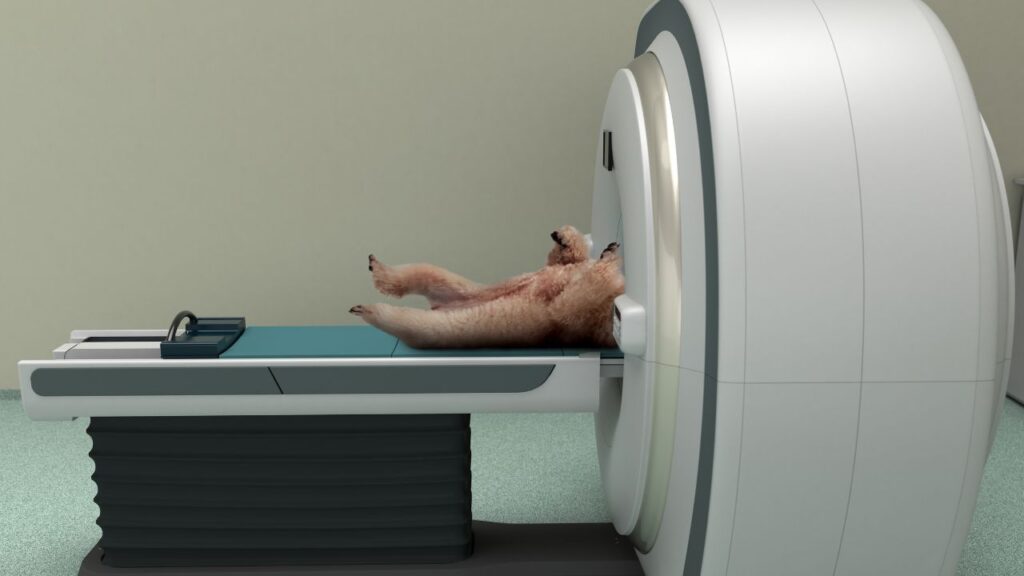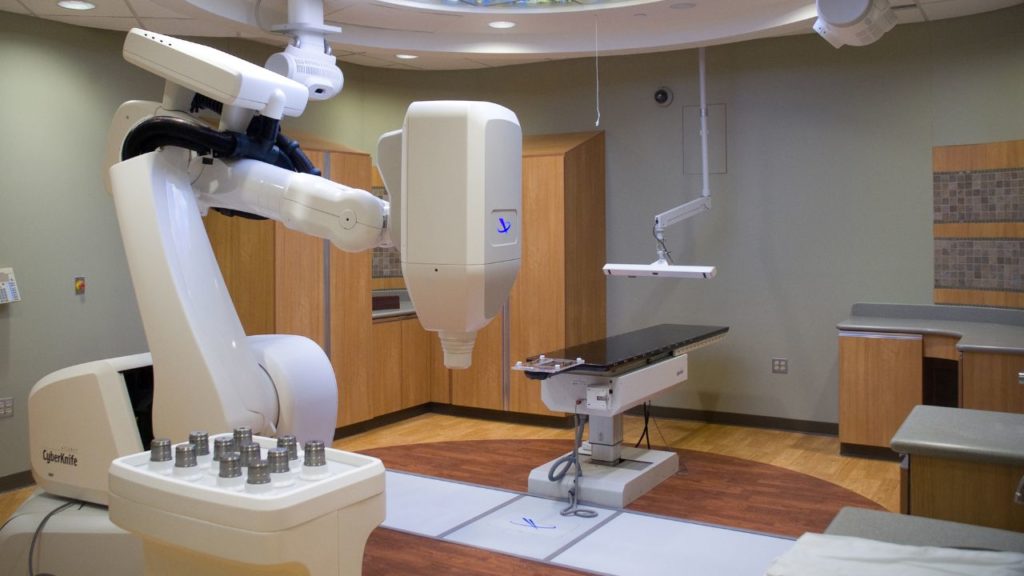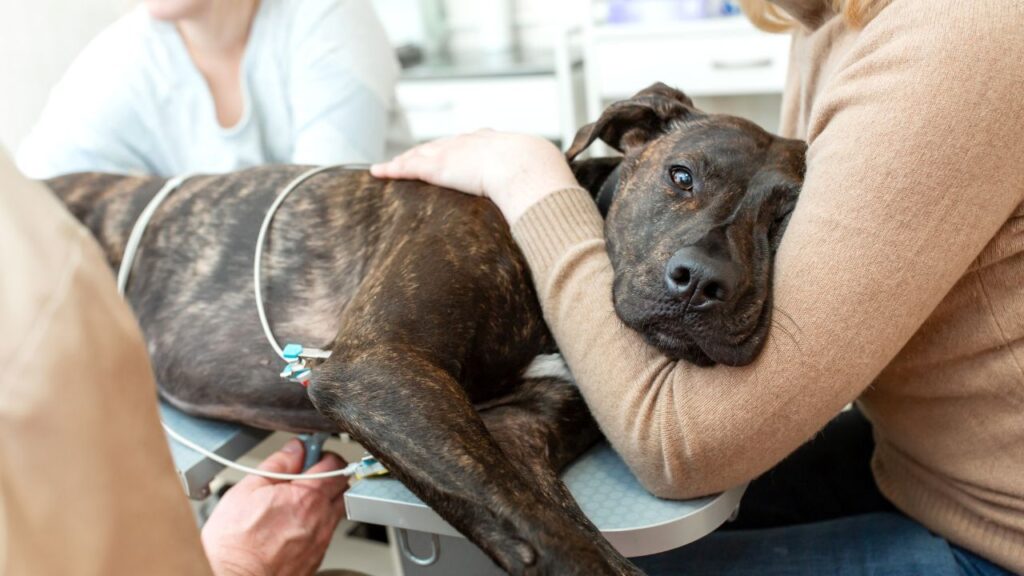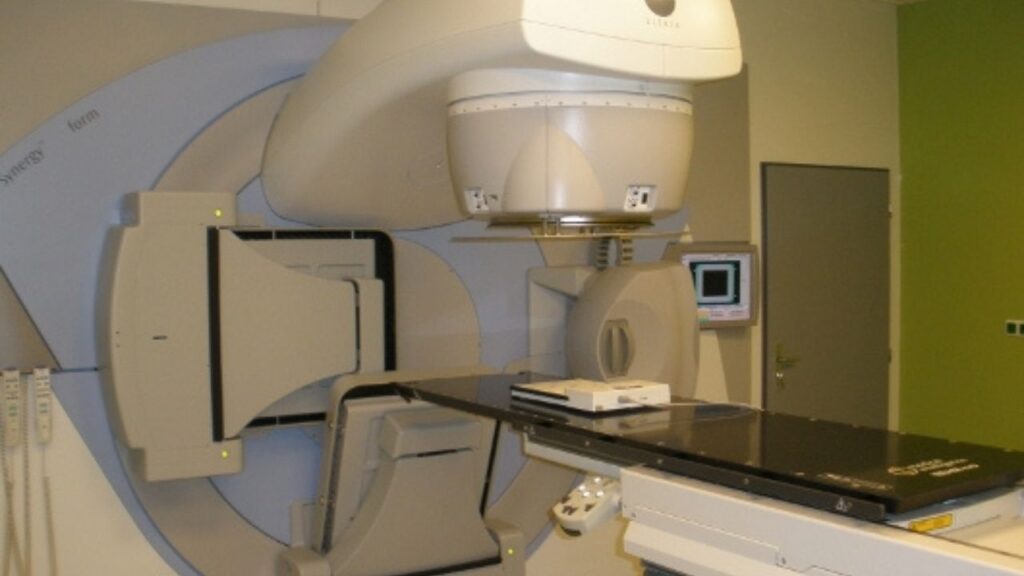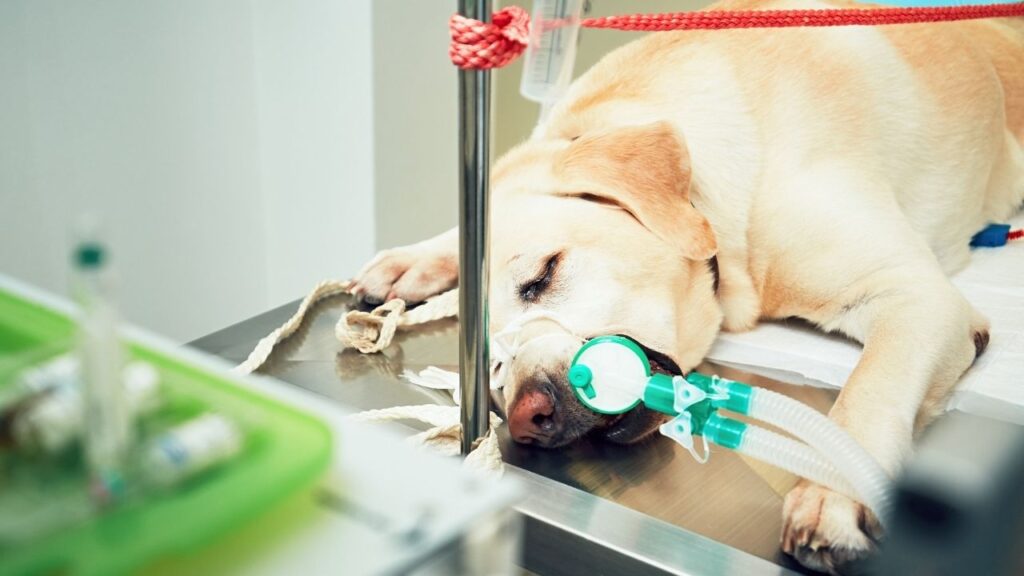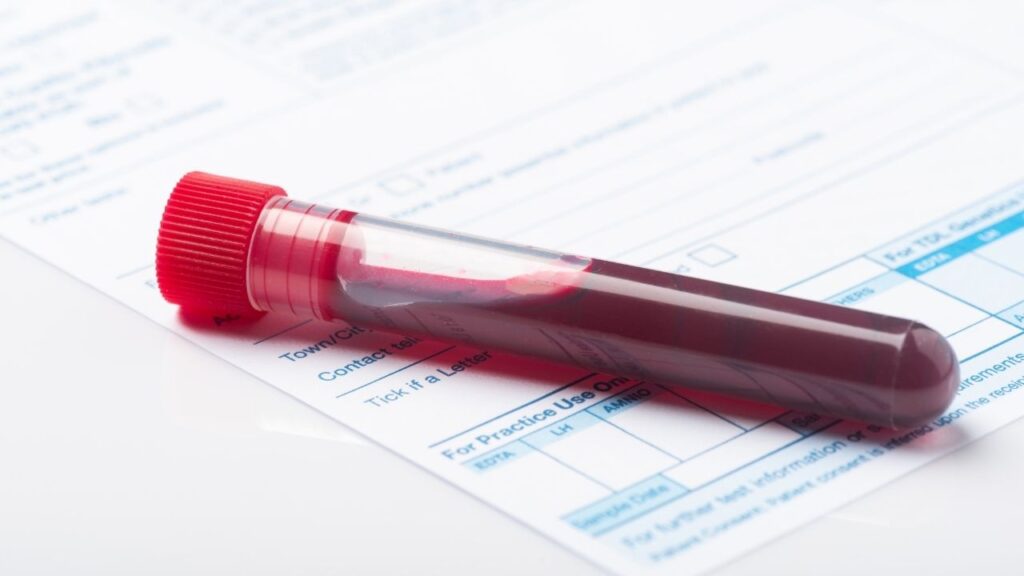MRI is a powerful diagnostic tool that is non-invasive and is now readily available at most veterinary specialty hospitals. MRI provides detailed images of your dog’s body, that are not available through more routine tests such as x-ray.
Key Takeaways
- MRI for dogs is a great diagnostic tool. If your veterinarian says it will benefit your dog it is worth getting one.
- The price varies depending on the equipment used and where you live. Prices may range from $1,500 and up.
- MRIs are expensive because the machinery itself is very expensive, and your dog will need to be anesthetized for an MRI. These are the biggest factors for the expense.
- Depending on what is to be scanned and the type of MRI machine, an MRI may be as short as 30 minutes to as long as 2 hours.
MRI for Dogs Make Diagnosing Cancer More Accurate
In the late 1980’s veterinary medicine achieved limited access to techniques like MRI (Magnetic Resonance Imaging) and CT (Computed Tomography) by utilizing human facilities. Fortunately, veterinarians now have ready access to advanced imaging techniques like MRI for dogs.
Most veterinary specialists have access to MRI in their hospitals. MRI affords the opportunity to better identify, localize and describe cancer and in some instances provide a prognosis. It is a non-invasive procedure; however, it does require anesthesia. MRI is a powerful tool for our canine cancer patients.
MRI: Non-Invasive Imaging
MRI is a powerful diagnostic tool, although it does not replace many diagnostic tests that are required prior to and after the MRI.1,2
MRI is non-invasive and images areas that cannot be visualized with more common techniques like x-rays or ultrasound. It can prove helpful in surgical and other treatment planning and in some instances provide a prognosis.3
What Happens During MRI for Dogs
Your dog will be placed under general anesthesia for the MRI to keep him completely immobilized and fully asleep. Prior to anesthesia, tests such as blood work, radiographs and ultrasound may be necessary to be sure your dog is a good anesthetic candidate. These diagnostics help identify any other diseases or tumors that may be present as well.
The time under anesthesia may vary from 30 minutes to 2 hours depending on the type of MRI machine and the studies being performed.2
Because the MRI is a magnet, it must be kept in a specialized room.2 You will not be able to remain with your dog during this test. Monitoring and anesthetic equipment specifically made to be used with the MRI are utilized to keep your dog safe and closely monitored.2
Other tests like cerebral spinal fluid (CSF) collection or biopsies may be performed before the end of anesthesia. Be sure you understand all procedures that are planned for your pet on that day, and follow your veterinarian’s instructions for preparing your dog for anesthesia, including instructions on withholding food, etc.
Patients recover from anesthesia over a variable period of time. Your dog’s health issues, the length of anesthesia and other variables contribute to how quickly or slowly they recover. Your dog should remain in the hospital until fully recovered and discharged by your veterinarian.
What MRI for Dogs Look Like
MRI studies will consist of many different views, also referred to as slices of the area being studied.
The types of slices or views are:
- Transverse- the slices are orientated from side to side, from head to tail
- Sagittal- the slices are along the long axis of the body from the midline to the left exterior, or the midline to the right exterior.
- Dorsal – Slices are orientated from top to bottom.
You can see examples of these views on this website hosted by the University of Minnesota College of Veterinary Medicine.
Each slice represents the interior architecture of all the tissues in that section. The more slices, the more accurate the study. Along with creating different views of the area being studied, the magnetic field gradient can be changed making tissues appear differently and providing further information.3
By combining all these different slices your doctor can create a 3-dimensional view of your dog’s tumor.
Typically, pre- and post-contrast studies are also performed. A contrast agent called gadolinium is given intravenously (IV). Gadolinium is typically well tolerated by dogs. After administration of the contrast the post-contrast MRI is performed. The contrast illustrates where blood vessels that may be supplying the tumor are or if there are areas of damage.
Common examples of MRI for dogs include MRIs of the head, abdomen, spine and limbs.
When a Dog MRI is Recommended
An MRI will be recommended by your veterinarian when more detailed information is required that cannot be achieved by other techniques.
Evaluation of intracranial structures or spinal structures is commonly performed by MRI. The brain and spinal cord are encased in bone and the soft tissues within these bony vaults are not visible on radiographs.
MRI could be recommended to further define the extent or invasiveness of a mass so that surgery or radiation therapy may be planned. MRI is used for patients with non-cancerous conditions as well.
MRI essentially can be used to evaluate any aspect of the patient’s body. However, MRI is sensitive to motion (which is why your dog must be anesthetized). Because of its sensitivity, MRI is not usually used to evaluate the chest and surrounding structures.1,2
How It Works
MRI uses magnets and radio waves to create a magnetic field. This images captured as a result are detailed and can help us see deep into the body.2
MRI helps our dogs with cancer by providing valuable information that cannot be achieved through more routine diagnostic tests, like blood work, radiographs and ultrasound.
Common Cancers MRI Helps to Diagnose and Treat
MRI is utilized to evaluate dogs with suspected tumors of the:
- Brain
- Sinuses
- Soft tissues of the face
- Spine
- Musculature and other non-bone orthopedic structures
- Abdomen
CT (Computerized Tomography) is often chosen over MRI to evaluate skeletal structures and the chest (thorax).1 The movement of breathing interferes with an MRI, lowering the quality of the images. CT does not have this difficulty.
How to Get the Best Results
- Consult with your veterinary specialist regarding whether MRI is indicated for your dog.
- Be sure that preliminary diagnostics are done before anesthesia.
- Be sure your dog is fasted before anesthesia (unless instructed otherwise by your veterinarian)
- Follow your veterinarian’s post procedure instructions. Recovery from anesthesia is usually quick and painless.
Home Care After Dog MRI
A home care plan should be provided by your veterinarian at the time of discharge. There are no side effects to be expected from the MRI.
However, post anesthesia most veterinary patients can be sedate or a little quieter for 12-24 hours. Be sure you read and understand all home care instructions.
Follow Up for MRIs
You might not find out what the MRI shows right away. Often the MRI will be reviewed by a veterinary radiologist as well as by the veterinarian that ordered the MRI, which can take a couple of days, depending upon their schedules. Follow up consists of a review of the MRI report and treatment planning as indicated.
When to Not Use MRI
Because MRI utilizes magnetic energy, patients that have metal implants should not have MRI performed:
- Metal will create artifacts in the study that may make them non-diagnostic.2
- Depending on the location and size of the metal implant and the size of the magnet, it may make the implant heat up and cause harm to your pet.
If your dog does have metal implants, removing them would allow MRI to be performed. You might also consider a CT scan, instead, which would not require removing metal implants.
If your doctor thinks your dog would not do well under a longer period of anesthesia, they might select a CT scan, since they are often faster than MRI.
Where to Get an MRI for Your Dog
Advanced imaging like MRI is typically available through specialty hospitals and veterinary schools.
Safety and Side Effects
MRI is a non-invasive and powerful imaging tool. MRI is safely used with no side effects if the precautions outlined above are considered.
Cost of MRI for Dogs
The costs of MRI may vary based on geographic location, type (or power of the magnet being used) and the number of areas being evaluated. MRI’s typical range in cost from $1,200-$3,000.00+ USD.
Anesthesia, the preliminary examination and diagnostics, biopsy, and CSF tap would likely be charged additionally. Be sure you are provided with a detailed plan and estimated costs before proceeding.
- Dennis R, Advanced Imaging: Indication for CT and MRI in Veterinary Patients, In Practice, In practice BMJ, 2003, 25:243-254
- Mai W, Diagnostic MRI in Dogs and Cats, 2018: 3-36, CRC Press
- Pons-Sorolla M, Clinical and magnetic resonance imaging (MRI) features, tumour localisation and survival of dogs with presumptive brain gliomas. Vet. Sci. 2022, 9, 257.
Topics
Did You Find This Helpful? Share It with Your Pack!
Use the buttons to share what you learned on social media, download a PDF, print this out, or email it to your veterinarian.
